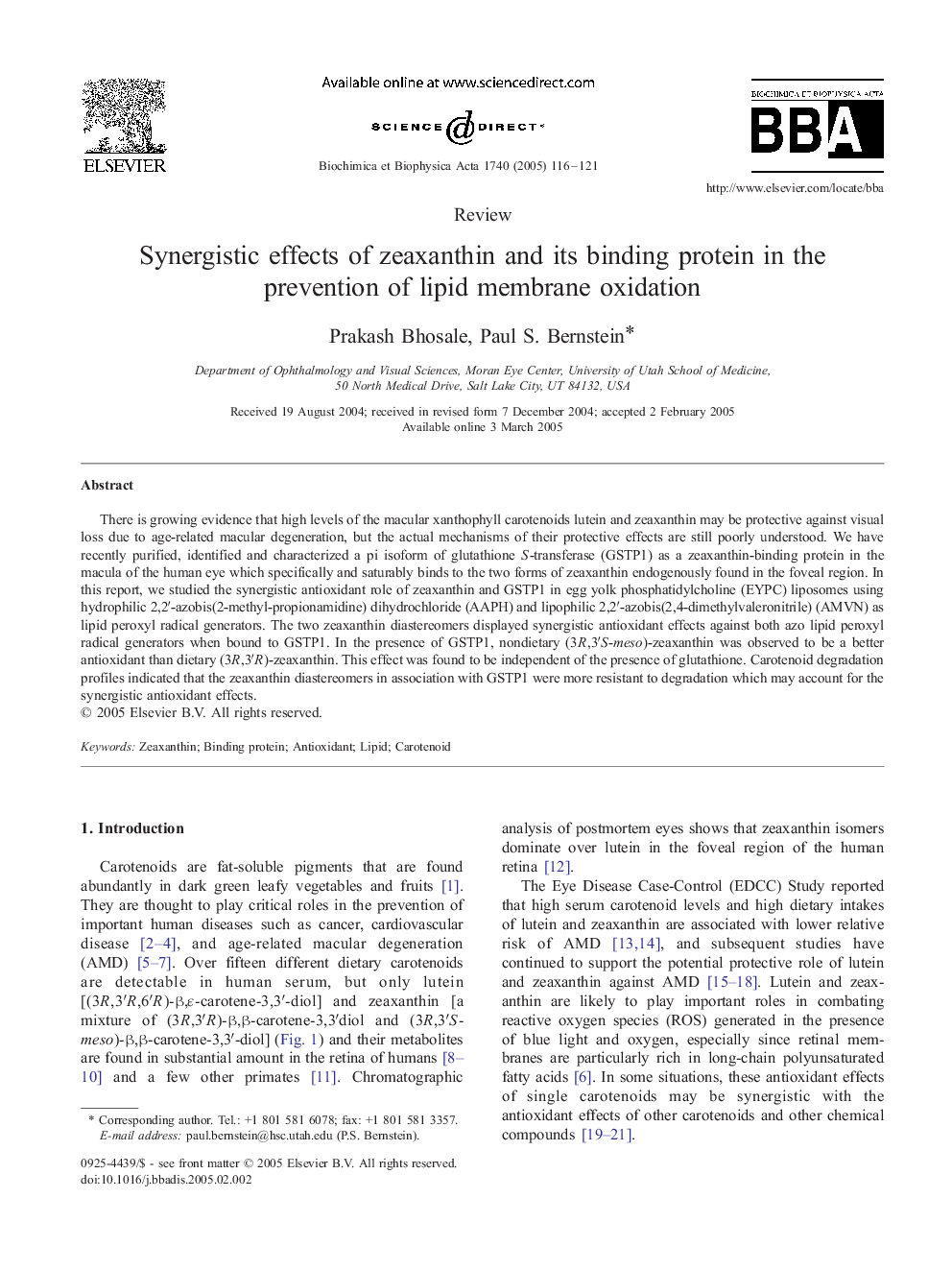| Article ID | Journal | Published Year | Pages | File Type |
|---|---|---|---|---|
| 9879470 | Biochimica et Biophysica Acta (BBA) - Molecular Basis of Disease | 2005 | 6 Pages |
Abstract
There is growing evidence that high levels of the macular xanthophyll carotenoids lutein and zeaxanthin may be protective against visual loss due to age-related macular degeneration, but the actual mechanisms of their protective effects are still poorly understood. We have recently purified, identified and characterized a pi isoform of glutathione S-transferase (GSTP1) as a zeaxanthin-binding protein in the macula of the human eye which specifically and saturably binds to the two forms of zeaxanthin endogenously found in the foveal region. In this report, we studied the synergistic antioxidant role of zeaxanthin and GSTP1 in egg yolk phosphatidylcholine (EYPC) liposomes using hydrophilic 2,2â²-azobis(2-methyl-propionamidine) dihydrochloride (AAPH) and lipophilic 2,2â²-azobis(2,4-dimethylvaleronitrile) (AMVN) as lipid peroxyl radical generators. The two zeaxanthin diastereomers displayed synergistic antioxidant effects against both azo lipid peroxyl radical generators when bound to GSTP1. In the presence of GSTP1, nondietary (3R,3â²S-meso)-zeaxanthin was observed to be a better antioxidant than dietary (3R,3â²R)-zeaxanthin. This effect was found to be independent of the presence of glutathione. Carotenoid degradation profiles indicated that the zeaxanthin diastereomers in association with GSTP1 were more resistant to degradation which may account for the synergistic antioxidant effects.
Related Topics
Life Sciences
Biochemistry, Genetics and Molecular Biology
Ageing
Authors
Prakash Bhosale, Paul S. Bernstein,
